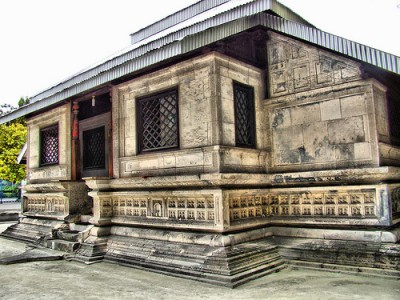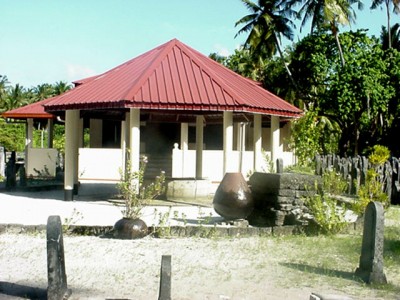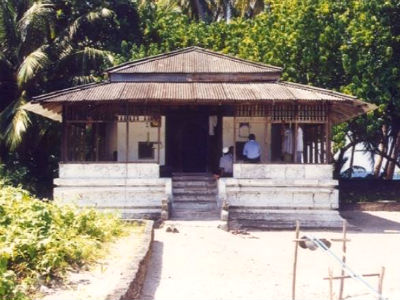The long-term effects of a crack in Dhaalu Atoll Meedhoo Island reef are unknown, experts have told Minivan News.
The crack – 5 inches wide running at least 13 meters deep – was discovered on the reef slope this week in the aftermath of a 20-hectare reclamation project. Reefs protect shorelines from storm surges and are hotspots for marine biodiversity.
Although cracks have previously been reported on Malé City and Thilafushi Island reefs, there have been no studies on their impacts, environmentalist and dive instructor Azim Musthag told Minivan News.
“This is concerning because we do not know what the long-term effects of cracks caused by industrial action are,” he said, noting that cracks sometimes do appear naturally in the reef.
The Ministry of Environment and Energy has said it is unclear if the crack was caused by reclamation work, and said a team from the Environmental Protection Authority (EPA) is currently on the island to investigate how the crack was formed as well as its possible long-term effects.
Even if the crack was caused by reclamation, there might not be any cause for concern with work already completed, environmental expert at CDE Consulting Ahmed Shaig said. But, possible extreme negative effects could be the collapse of parts of the reef slope, he said.
A 2007 study of the cracks in the northeastern slope of the Malé reef projected that the island’s reef edge may retreat if eroded parts of the reef fall in.
The study by former deputy director at the Environmental Research Center Mahmood Riyaz said Malé City’s reef slope consists of hard coral rock in the first two- three meters called cap rock, and a layer of weakly cemented and highly erodible mixture of coral sand at between four and six meters.
The cracks had removed the hard cap layer, exposing the weakly cemented layer to further erosion, and “eroded parts are expected to fall into the atoll lagoon and cause further retreat of the reef edge,” the study said.
The Malé reef had cracked in areas under a lot of weight and subject to continuous vibration generating work such as construction, the study said.
Meedhoo Councillor Abdul Azeez said he too was unsure if the crack was caused by reclamation, but said the project had caused severe damage to the reef due to sedimentation.
Only 100 feet remained between the new shoreline and the reef edge, “so sedimentation is unavoidable,” Azeez said. But he welcomed the reclamation project saying “this is a dream come true after 22 years.”
Sedimentation had been caused by dredging company Royal Boskalis Westminster’s failure to build a barrier to prevent excess dredge from spilling on to the reef. Photos show healthy corals inundated by sand across large swathes of the reef.
Azim said the reef would take years before it began recovering and said it might be at further risk of sedimentation by sand spillover if the new shoreline is left unprotected.
The reclamation project has come under fire for using a method called the rainbow technique, which propels sand and salt through the air, covering houses and shoreline vegetation in dredge soil. The fine sand particles thrust into the air may cause respiratory issues, the Health Protection Agency has warned.




